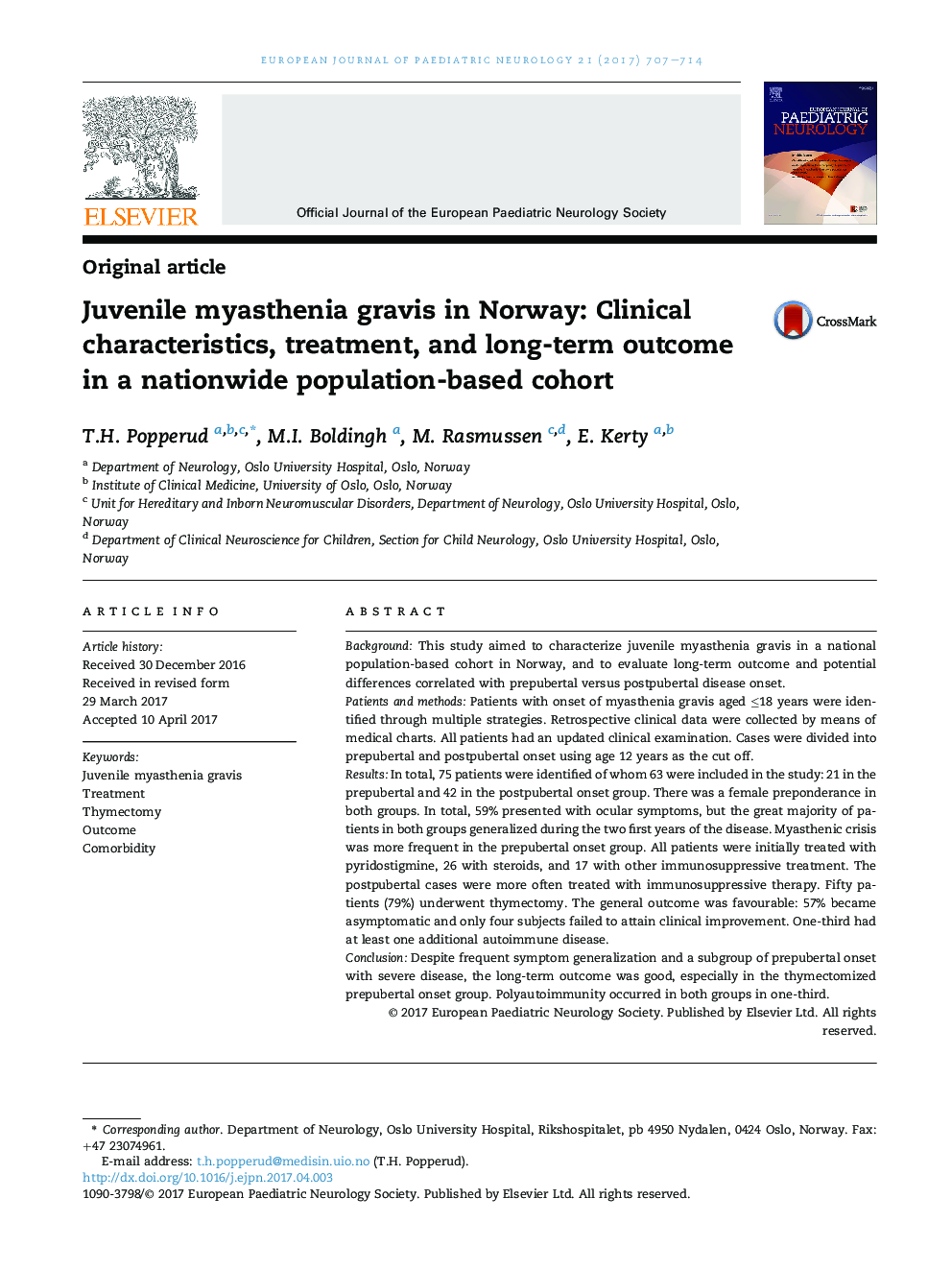| کد مقاله | کد نشریه | سال انتشار | مقاله انگلیسی | نسخه تمام متن |
|---|---|---|---|---|
| 5628855 | 1579998 | 2017 | 8 صفحه PDF | دانلود رایگان |

- The vast majority of JMG patients generalized, typically within 2 years of onset.
- Favourable outcome in JMG, with 57% of cases asymptomatic at last follow-up.
- Additional autoimmune disease occurred in one-third of JMG cases.
BackgroundThis study aimed to characterize juvenile myasthenia gravis in a national population-based cohort in Norway, and to evaluate long-term outcome and potential differences correlated with prepubertal versus postpubertal disease onset.Patients and methodsPatients with onset of myasthenia gravis aged â¤18 years were identified through multiple strategies. Retrospective clinical data were collected by means of medical charts. All patients had an updated clinical examination. Cases were divided into prepubertal and postpubertal onset using age 12 years as the cut off.ResultsIn total, 75 patients were identified of whom 63 were included in the study: 21 in the prepubertal and 42 in the postpubertal onset group. There was a female preponderance in both groups. In total, 59% presented with ocular symptoms, but the great majority of patients in both groups generalized during the two first years of the disease. Myasthenic crisis was more frequent in the prepubertal onset group. All patients were initially treated with pyridostigmine, 26 with steroids, and 17 with other immunosuppressive treatment. The postpubertal cases were more often treated with immunosuppressive therapy. Fifty patients (79%) underwent thymectomy. The general outcome was favourable: 57% became asymptomatic and only four subjects failed to attain clinical improvement. One-third had at least one additional autoimmune disease.ConclusionDespite frequent symptom generalization and a subgroup of prepubertal onset with severe disease, the long-term outcome was good, especially in the thymectomized prepubertal onset group. Polyautoimmunity occurred in both groups in one-third.
Journal: European Journal of Paediatric Neurology - Volume 21, Issue 5, September 2017, Pages 707-714